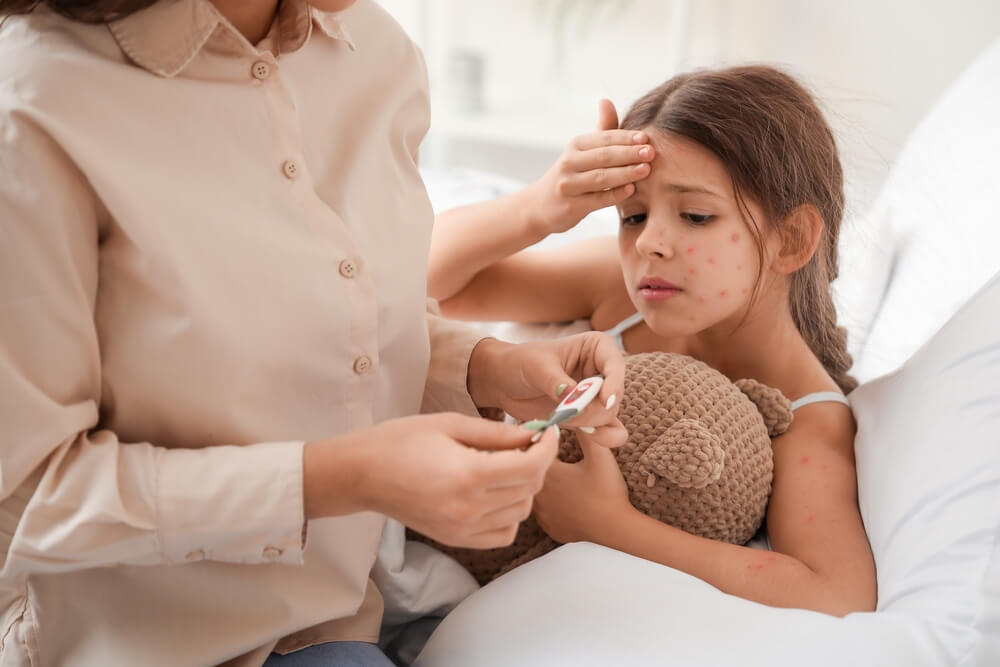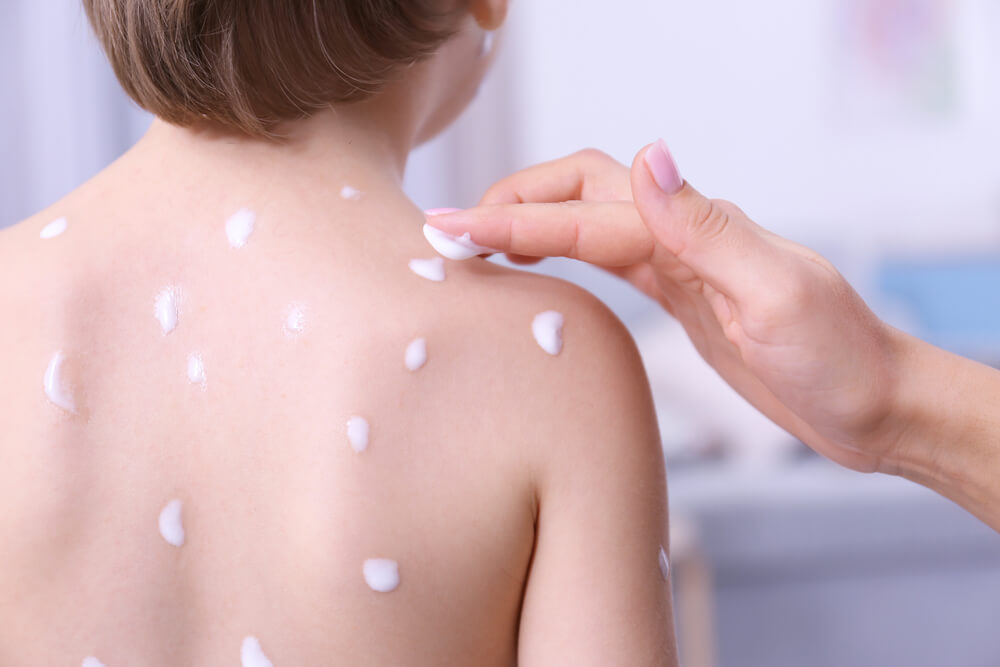Chickenpox, also referred to as varicella zoster or just varicella, is a virus infection that presents itself with a red rash that could lead to blisters and eventually scabs. Further complications can lead to shingles. It’s crucial that you take your child to a doctor as soon as you notice potential chickenpox symptoms, as it’s highly contagious and can be dangerous if ignored. You can always trust a professional pediatrician in Miami and get in touch with us at Worldwide Pediatrics for all your child’s pediatric needs. In general, the best way to protect your child against varicella is with a vaccine.
What Is Chickenpox?
The skin rash caused by chickenpox is the result of an infection. The varicella-zoster virus is the cause of the condition, which is why varicella-zoster is yet another name for chickenpox. Unless they have been vaccinated, most people will contract chickenpox as children.
The chickenpox virus is easily spread from one child to another. Since most children get vaccinated early, chickenpox has become a relatively rare disease. Before introducing the first varicella vaccine in the United States in 1995, the disease was pretty common but rarely ever resulted in complications.
It is impossible to contract chickenpox a second time once you’ve had it. Chickenpox can strike at any time of life if you haven’t been vaccinated. It can cause severe illness in adults; therefore, getting it as a child or being vaccinated against it is preferable.
Chickenpox can affect children of any age. One to three weeks after exposure to the virus, your kid may seem completely healthy. The incubation period for the virus in children is one day before the onset of symptoms to around five days after the rash first shows. The infection spreads in the following ways:
- Being in contact with the infected person
- Getting in contact with the infected person’s fluids from the nose, eyes, and mouth
- Breathing the air around the infected person who coughs or sneezes
Most Common Chickenpox Symptoms

Chickenpox symptoms are noticeable right away. The rash is easily identifiable on a child’s skin, which is why doctors can usually tell if their patient has it just by looking at them. The following is a typical progression of the symptoms:
- Fever
- Fatigue
- Headache
- Stomachache
- Itchy skin rash
- Blister-like bumps filled with liquid
- Scabs caused by blisters breaking
- Blotchy-looking skin
- Fading spots
Seven to ten days after the rash begins, your child is healthy enough to return to school or daycare. However, you should wait for the blisters to break and have scabs over them before sending them out. As long as the blisters are filled with liquid, it’s possible to spread the disease.
What to Do When Your Child Has Chickenpox?
Your child will feel better if you ensure they get lots of sleep and drink lots of fluids. In about a week or two, their chickenpox will clear up on its own. A few things you can do to help your child deal with the itch are as follows:
- Use a moist and cool rag on the skin with the rash.
- Make sure that the child feels cool enough.
- Trim your child’s nails and explain how important it is to resist scratching
- Special antihistamine lotions available at pharmacies could be applied directly to the rash.
- Some over-the-counter antihistamine meds are safe for children, such as Zyrtec and Benadryl.
- Make sure to bathe/shower your child every day in relatively cool water; dry them by patting the towel on the skin, not rubbing.
- An oatmeal bath might be helpful to relieve itching.
Do not give aspirin to a child. Children with fever should not use aspirin since it can cause serious side effects. Use Tylenol if your kid has a fever or is in pain. Ask your doctor or pharmacist for advice if you’re unsure about safe medicine.
To ensure your child doesn’t suffer from dehydration, give them plenty of fluids. If they have mouth sores, they should have cold drinks and eat bland and soft foods.
It’s essential to notify a doctor immediately if your newborn (3 months old or younger) develops chickenpox. Babies are at a greater risk of chickenpox complications.
Potential Varicella Complications

In general, chickenpox complications are quite rare in this day and age. However, they are still possible and could be:
- Dehydration
- Healing problems
- Blood clotting issues
- Liver problems
- Pneumonia
- Encephalitis
- Blood/tissue/skin bacterial infection
Chickenpox often causes no severe side effects in otherwise healthy people. However, very young infants, adolescents, pregnant women, and those with a weakened immune system may be at greater risk of a severe case of varicella infection. People with HIV, cancer or those receiving chemotherapy or steroids are also in this category.
Chickenpox typically does not result in death. In most cases, recovery proceeds without any problems. Sadly, though, chickenpox has been responsible for some fatalities. After widespread immunization, the annual death toll in the United States plummeted from the 100s to the 20s. From over 10,000, there was an 84% drop in hospitalizations per year.
What About the Chickenpox Vaccine?
Two doses of the vaccine are recommended for children under 13 years old, the first between 12 and 15 months and the second between four and six years of age. Those 13 or older who have never had a vaccine should split the doses by at least 28 days.
Varivax is a vaccine developed specifically to prevent chickenpox. Another option is the measles, rubella, mumps, and varicella vaccine, known as ProQuad (MMRV).
The vaccination protection rate against chickenpox is above 90%.
Unfortunately, the chickenpox vaccine isn’t appropriate for everyone. The vaccine is not recommended if you:
- Suffer from potential allergies to any ingredient of the vaccine
- Are currently pregnant or believe you could be
- Have immune system issues and/or tuberculosis
- Don’t feel good overall (you’ll need to wait to be well again)
- You had a blood transfusion or some other live vaccines recently
Make sure to discuss the benefits and risks of vaccination with your doctor.
Chickenpox rash typically first appears on the face, chest, and back and then quickly travels to other body parts from there. Chickenpox is classified into three distinct phases based on the appearance of the rash. In the first phase, a red, bumpy rash appears. A blistering, fluid-filled rash is the second phase. The third phase involves the formation of scabs after the blisters have burst. The infection typically passes after about two weeks, sometimes even sooner. If you notice any symptoms of this condition in your child, want to inquire about a preventative varicella vaccine, or simply wish to find a reputable and trustworthy pediatrician, don’t hesitate to reach out to us at Worldwide Pediatrics. You can count on expert pediatric care backed by years of experience and modern medical techniques.



